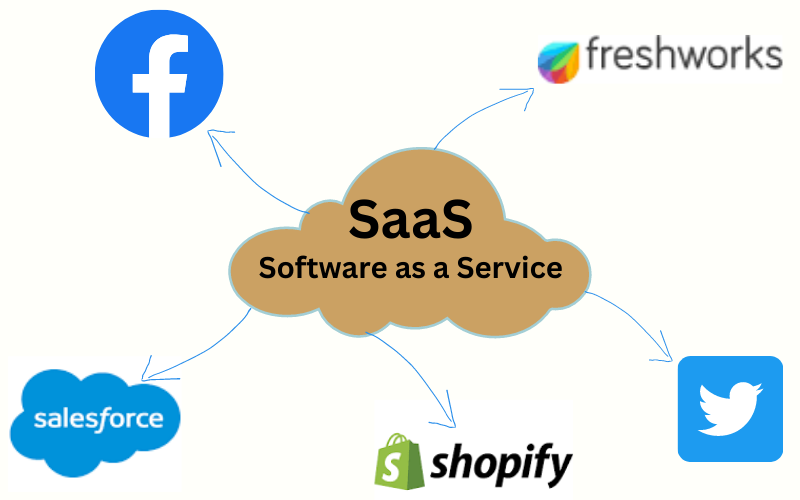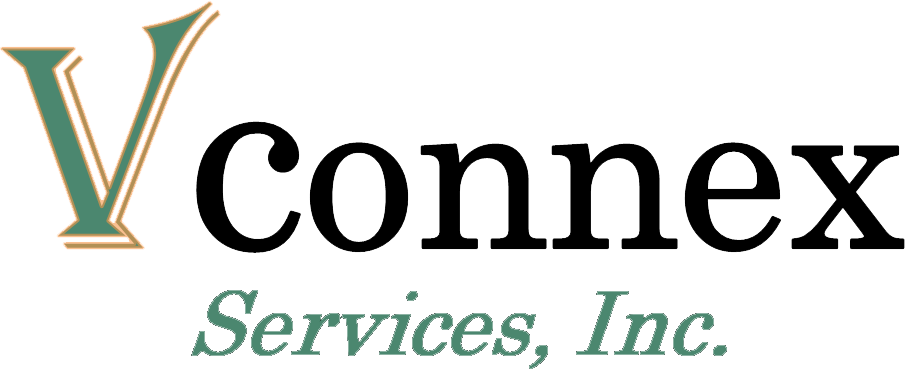How to Build a Successful Cloud-Based SaaS Application (2023 Updated)
How to Build a Successful Cloud-Based SaaS Application
A recent study shows that the SaaS industry has increased in size by around 500% over the past seven years and the value is projected to grow to $700 billion by 2030. Developing SaaS applications is the next logical step on your way to business growth. However, transforming your existing solution into SaaS or creating it from scratch requires a deep understanding of SaaS specifics, SaaS application development best practices, and possible pitfalls you have to avoid.
If you want to build a SaaS application but don’t know where to start, you’ve come to the right place. you will:
Let’s get started!

What is a SaaS application?
SaaS, or software as a service, is an alternative business model to traditional software licensing. With the SaaS approach to software delivery and maintenance, developers don’t sell their programs with a lifetime license or wait until next year’s version to release feature updates. Instead, companies market their software as a service (hence the name), typically via a subscription model.
Users of such software do not have to deal with complicated configurations or updates. They always have access to the newest versions of the software. Such programs can be used anywhere in the world, from any device and web browser even without an internet connection. A great example of a Software as a Service business model is Adobe’s Creative Cloud - which moved from traditional software to a SaaS model.
SaaS offers benefits like:
Security - Cloud service providers ensure maximum security of data
Cost efficiency - No need to buy and maintain hardware
Reliability - Servers can be located around the world so even if one of them goes down, the app will remain online
Scalability - You can upgrade or downgrade your plan with a few simple clicks according to your requirements
What is more, a SaaS-based application can be used on multiple devices (including mobile devices) with a single login, contrary to traditional software. Users also usually have the opportunity to test the software before buying the subscription which is a significant advantage.
Challenges of SaaS Development
With every development come challenges. Having a business is always a risk. Although it is impossible to foresee what problems you may encounter on your way, there are a few most frequent problems in SaaS application development.
Lack of trust from customers - without trust you will not have customers, especially in the SaaS model. Large SaaS companies have loyal users that will follow them everywhere, but when you are entering the market it may become a problem. To gain people’s trust show them security, and care about your user experience and user interface as well as your logo and branding.
Small target audience - although having a one-of-a-kind product is daunting it is equally dangerous. With too small of an audience, your solution will not bring enough profit. To avoid that, try a horizontal development - by expanding functionalities. Do not forget to conduct a business analysis to further understand your target customers’ needs, competition, and ongoing trends.
Poor idea - there are no bad ideas, just poor execution of good ideas. However, there is no sense in developing an application that will not meet current trends or customer demand. For example, a CD recording application will not be of any use in 2020, but a CD recording that allows users to save and share the data would be much better.
6 Steps For Successful SaaS Application Development
Step 1: Formulate and validate your product idea
Every SaaS software project starts with preliminary market research and business idea validation. This step involves business analysts and project stakeholders to:
Gather all the necessary information about the product;
Evaluate target audience;
Define business value.
After you complete the business idea validation, your startup is ready to move on to the implementation phase.
Step 2: Conduct in-depth product discovery
Product discovery equips product teams with a powerful tool to understand customer needs, aiding the process of developing products that meet and exceed their expectations. Prioritizing features is made easier through this invaluable approach which can form an integral part of ensuring top-notch results.
Step 3: Start UI/UX design
When it comes to web app design, you need to think about the user interface (UI) and user experience (UX). Before building a cloud-based SaaS application, it’s important to decide on the interface so it perfectly meets the needs of your target audience.
When thinking through your SaaS platform’s user interface and user experience, keep in mind what devices your target audience will use. SaaS applications work on both computers and mobile devices. A UI/UX specialist will prepare designs for devices with different resolutions so your users can work conveniently in the office, at home, or on the go.
Step 4: Move to the development phase
Now it’s time to transform your design into a working product. Most often, for this stage, assign 2+ developers for the main stages of development (front-end and back-end development). Let’s look at the main stages that make up the SaaS application development phase:
Tech stack & documentation. The development team determines technologies that will be appropriate for the project. The team compiles technical documentation describing all features and functionality and the relationship between user roles.
Software architecture plan. Developers create the basic structure of the product. On the back end, they choose whether it will be, for example, a monolith or microservices and choose the controllers and types of APIs they will use. On the front end, developers determine how the user interface will be implemented and schematically depict which parts of the product will interact with each other.
Sprints planning. At this stage, the team determines the priority and sequence of feature creation. This stage is critical because the entire product development plan is based on it.
Infrastructure setup for testing + CI/CD to the test servers. DevOps set up the production-like environment for running the developed application on the cloud. The customer has access to it and can also test the product. The team configures the system so that all changes the team makes to the product automatically appear in this environment.
Client and server development & QA. At this stage, client and server parts of the product are developed (development of UI components, API, etc.) and tested.
Regression Testing. QA tests the entire product thoroughly. We fix bugs that may have appeared when we were adding new features and product components. Production Infrastructure setup + CI/CD to the prod servers. The development team creates a separate, more flexible and scalable environment on the cloud that is production-ready. They configure domains and the system so that all changes developers make to the product automatically appear in this environment.
Step 5: Deploy your SaaS application
This stage is the final one in SaaS application development. You can release the finished product. At this stage, we recommend tracking reactions and feedback from first users. They will show you what needs to be improved in the product or changed in the future.
Step 6: Maintain and support your SaaS application
Work on your new SaaS application is not over. You will need to correct inaccuracies and improve your product from time to time. Support your SaaS application throughout its entire life cycle, then success is guaranteed to you.
Things To Keep In Mind When Developing A Saas Application
SaaS app development is a complex and long-term process that requires lots of responsibility, so you need to think through several important things before you start developing your cloud application.
1. Technology stack
First, you’ll need several tools for developing the platform’s client-facing components. These are well known and nearly ubiquitous:
HTML + CSS, JavaScript frameworks (Angular, React, Vue.js) For server-side development, there are a few programming languages (and corresponding frameworks) to choose from:
JavaScript (Node.js) PHP (Laravel) Ruby (Ruby on Rails) SaaS applications are built on the basis of cloud computing, so cloud services are essential for building this type of app. We’ve already mentioned that AWS services are a top choice for ensuring reliable performance of cloud-based applications. With more than 200 tools, scalability opportunities, and a focus on security, AWS is the best choice for building SaaS applications.
Some of the AWS technologies we apply in our projects are AWS S3, AWS KMS, and DocumentDB.
S3 is file storage that provides app owners with an opportunity to store large amounts of data at a reasonable cost.
AWS Key Management System (KMS) is a system that helps to manage and encrypt/decrypt keys for different services.
DocumentDB is a fast non-relational database used to store metadata.
Saas Development Team Structure
While the number of team members can vary, there are specific roles you need to fill to develop cloud-based SaaS software. They are listed below:
Project manager is responsible for planning the software development process, assigning tasks, and following up on their fulfillment, ensuring the progress meets the deadlines and is aligned with all the requirements.
Business analyst analyzes your software’s market potential and assesses & builds a viable business model for you.
UX/UI designer is a person who designs and implements your application’s user interface and experience, ensuring it’s easy to use, aesthetically pleasing and aligns with your brand identity.
Back-end developer works on the server side of your SaaS application, making sure it functions as planned using scripting languages.
Front-end developer is a specialist who works on the client side, turning designs into code, usually using JavaScript and its frameworks.
QA engineer tests your SaaS software for defects, bugs, and issues and reports them to be fixed by the engineers.
Depending on your project size and budget, you may also need other specialists like a technical writer, a marketing specialist, or a product manager on the development team. In addition, if you are leaning towards DevOps for SaaS projects, you will also need a DevOps engineer. As the smartest tactic, consider partnering with a tech-savvy software development vendor who can help you gather a cross-functional team of developers with a product-oriented mindset.
2. Design multi-tenancy with performance and security in mind
What is special about SaaS websites is the fact that they are self-service. This means that anyone who is interested in a given product can register and start using the service straight away. Users should be able to customize the solution to their requirements and needs.
Multi-tenancy means that a single instance of a software application is meant to serve multiple customers and it is the key to the success of your system. This is achieved either through separate databases or one database that displays adequate information to particular users. Thanks to that the development will be faster since developers can make use of a previously written code base to expand the service and apply changes. Multi-tenancy also means that the application should be very secure since the infrastructure is shared among all users.
3. Pricing strategy
The pricing strategy can be the make or break of your cloud-based application. There are quite a few options available like:
Freemium - your app provides standard functionalities for free and can be expanded to more premium paid features. This model allows users to get to know the application, but remember to provide enough functions to attract customers while not being too generous
Subscription - similar to freemium, this model is based on a recurring fee (eg. on a monthly basis) for extra content. It is best suited for content-focused applications like video hosting app
Paid applications - your application is available for a one-time purchase. The advantage is that even if the user stops using your product, you still get the money. On the other hand, customers will be less willing to pay the upfront costs if they are not sure of its quality and usefulness
How to Build a Cloud-Based SaaS Application With Vconnex Services
When it comes to ensuring your business has a competitive edge, Vconnex SaaS development services are here for you. Our expertise and passion for cloud solutions make us uniquely qualified to help build or manage a secure, scalable application around any of your organization’s needs all at lightning-fast speed! If you have an idea for a SaaS project that you want to turn into reality and you are looking for a reliable team to help you, get in touch with us today! We are ready to discuss your project.
Final thoughts
Hope we’ve managed to help you put priorities when considering how to develop a SaaS application. Today, there are many approaches to distributing digital services. Yet, there is no silver bullet here that fits all business needs.
At least, SaaS application development has become a popular model because of the competitive advantages it can provide to both customers and business owners. So, when you understand what tools and steps are needed in this process – there is little left to achieve your goal.
Looking for SaaS application specialists to create your product development roadmap? Let’s make your business idea viable together!
Keep Reading:
SaaS: Our Experience and Insight
How to Develop a Minimum Viable Product (MVP): A Step-by-Step Guide
10 Important Things You Need to Know Before Developing Your App

